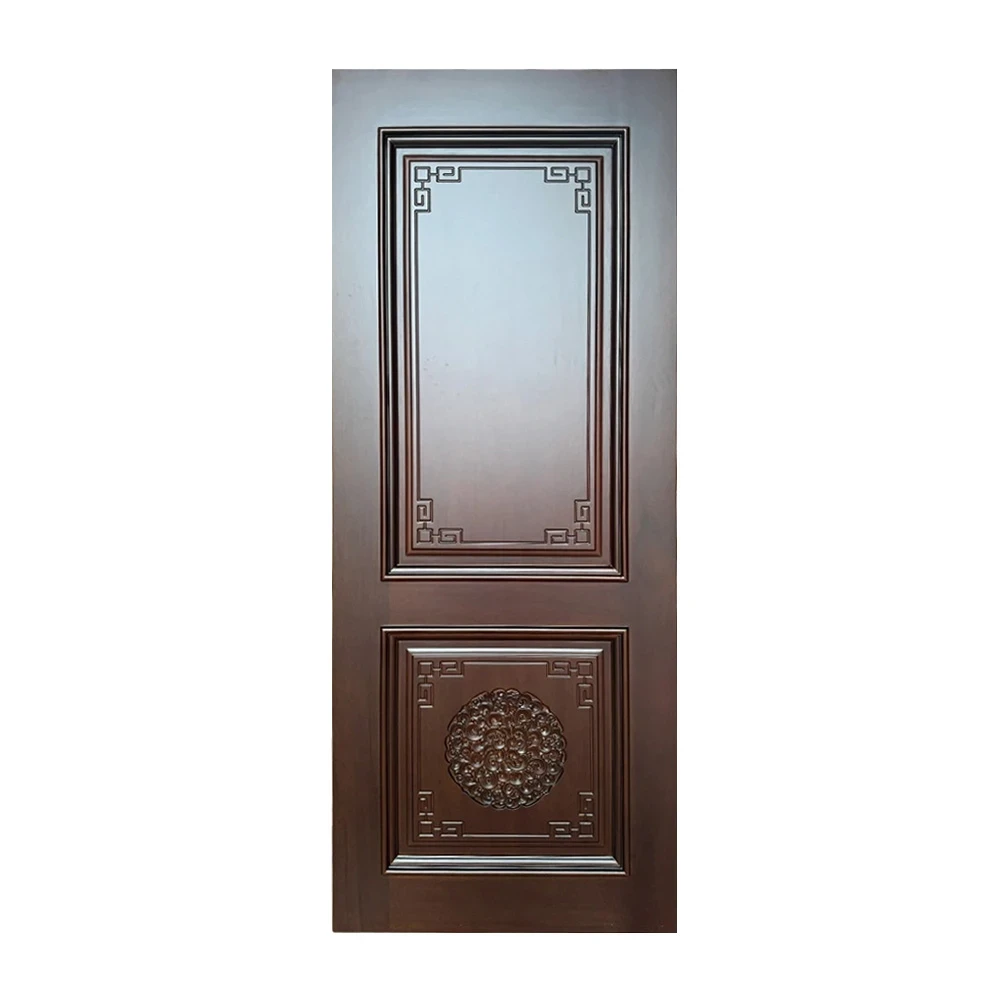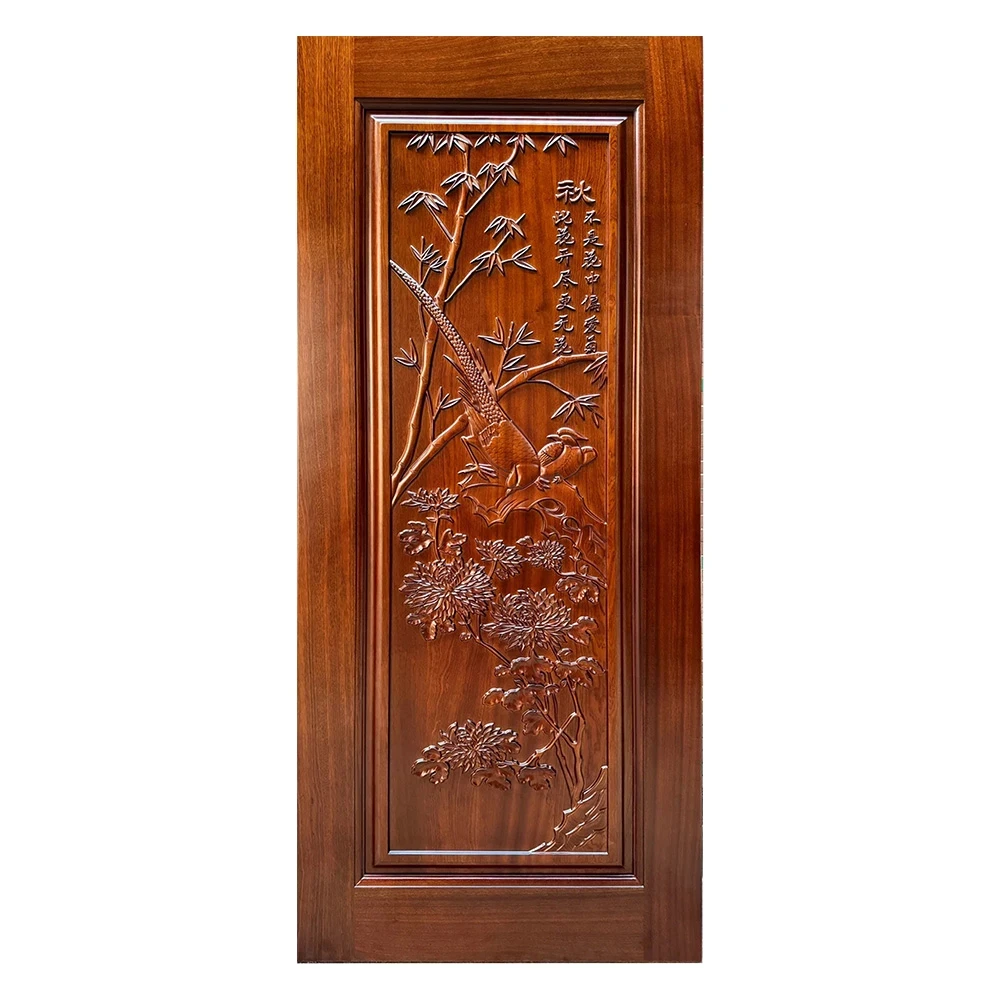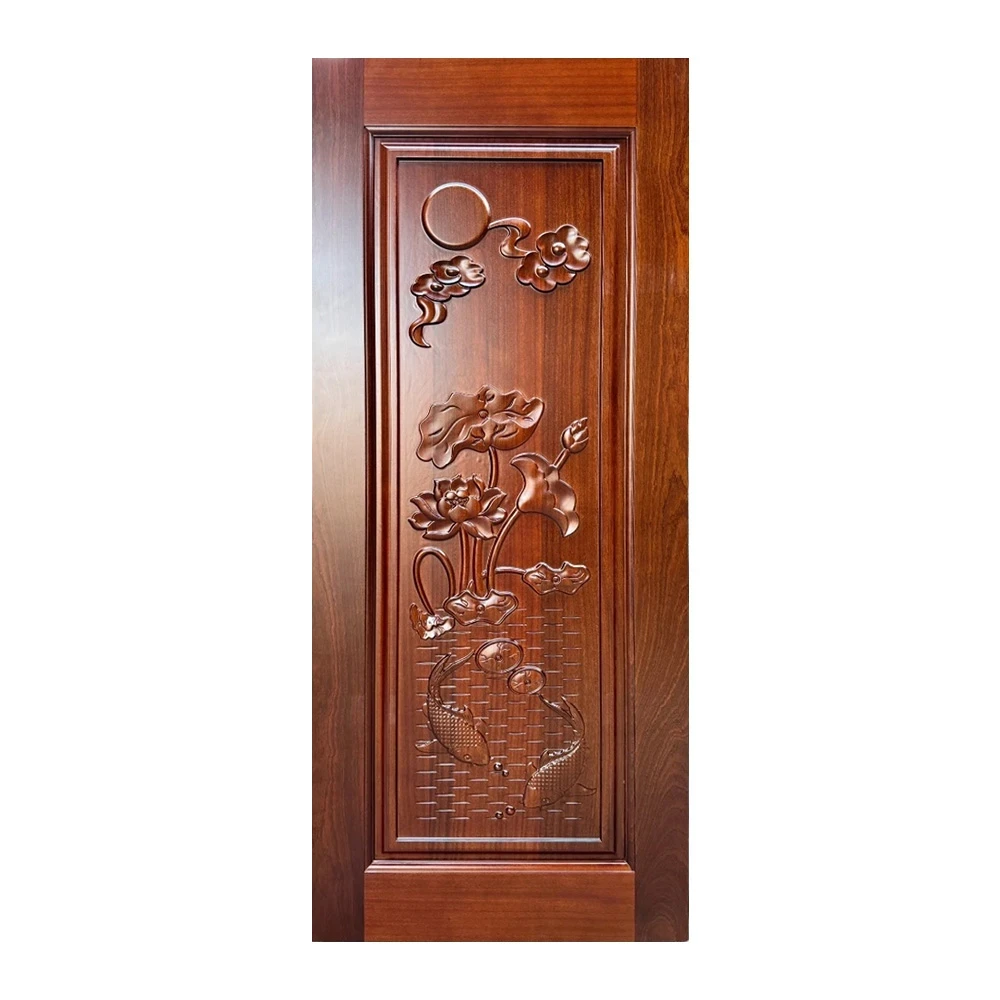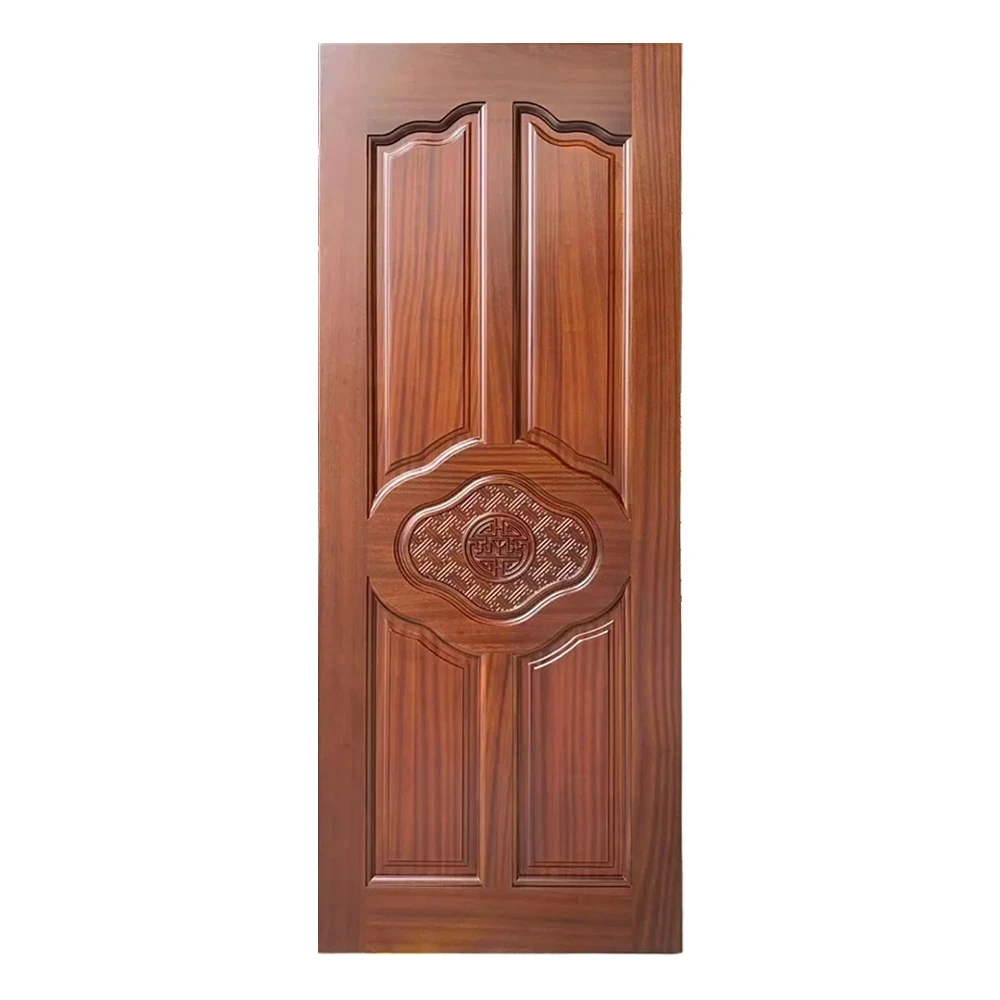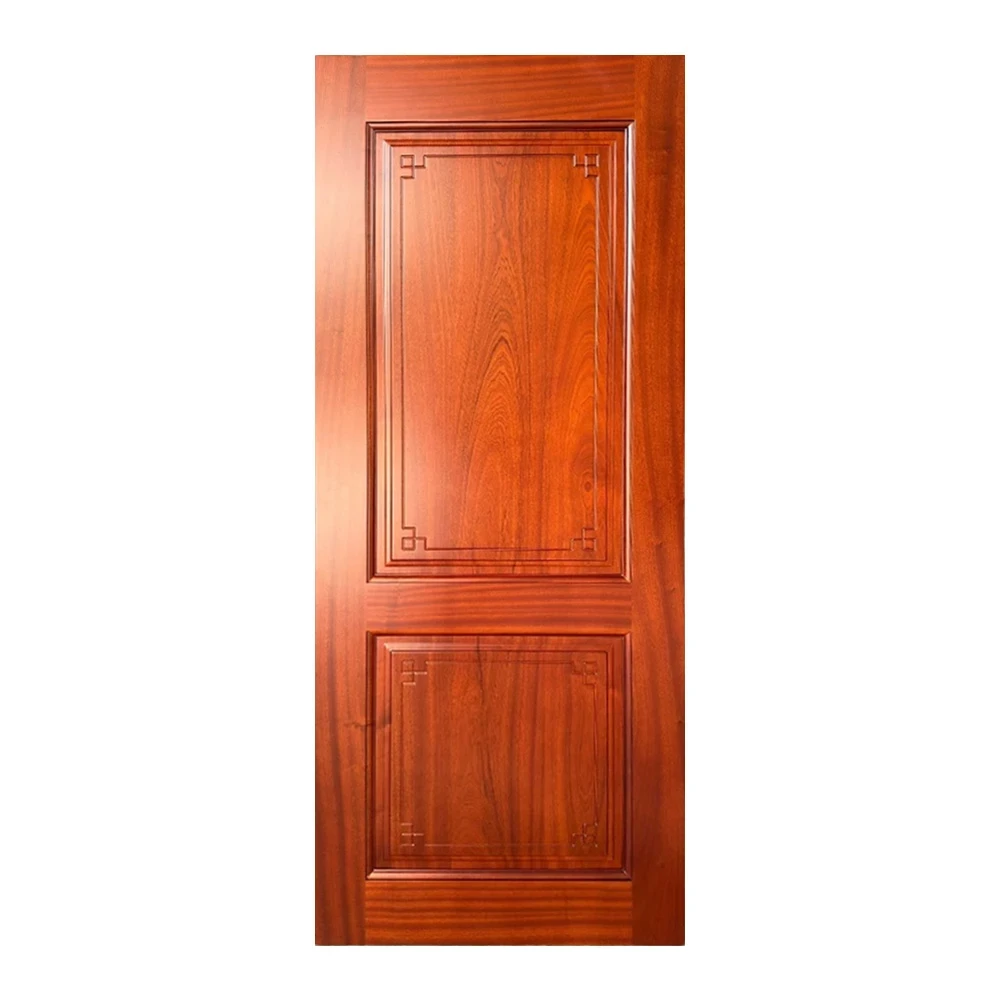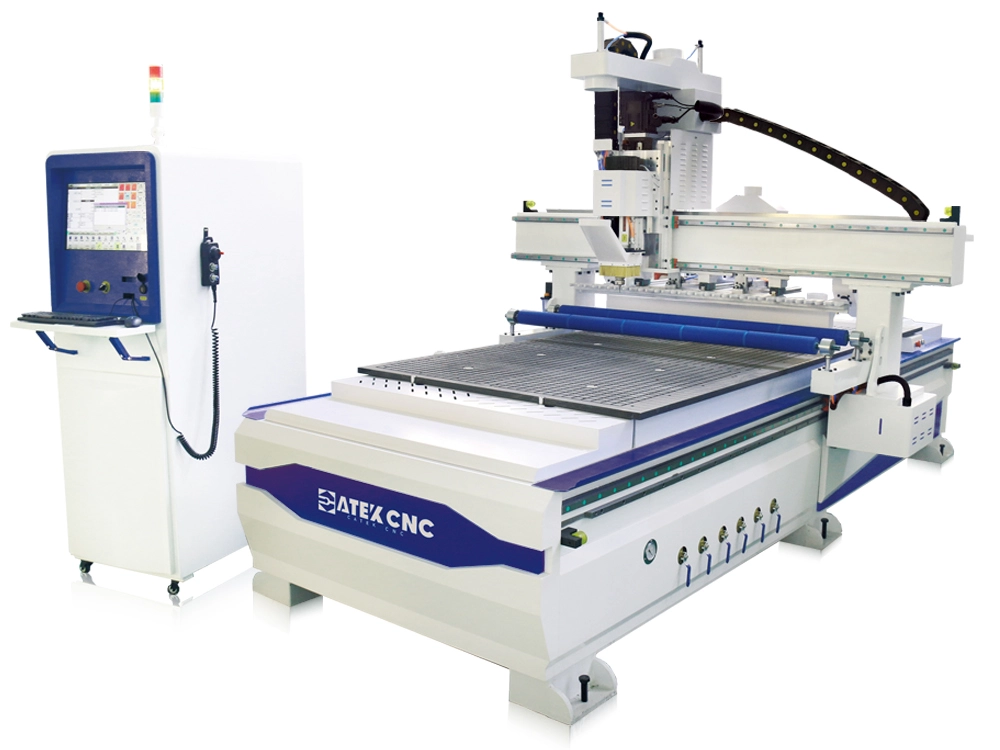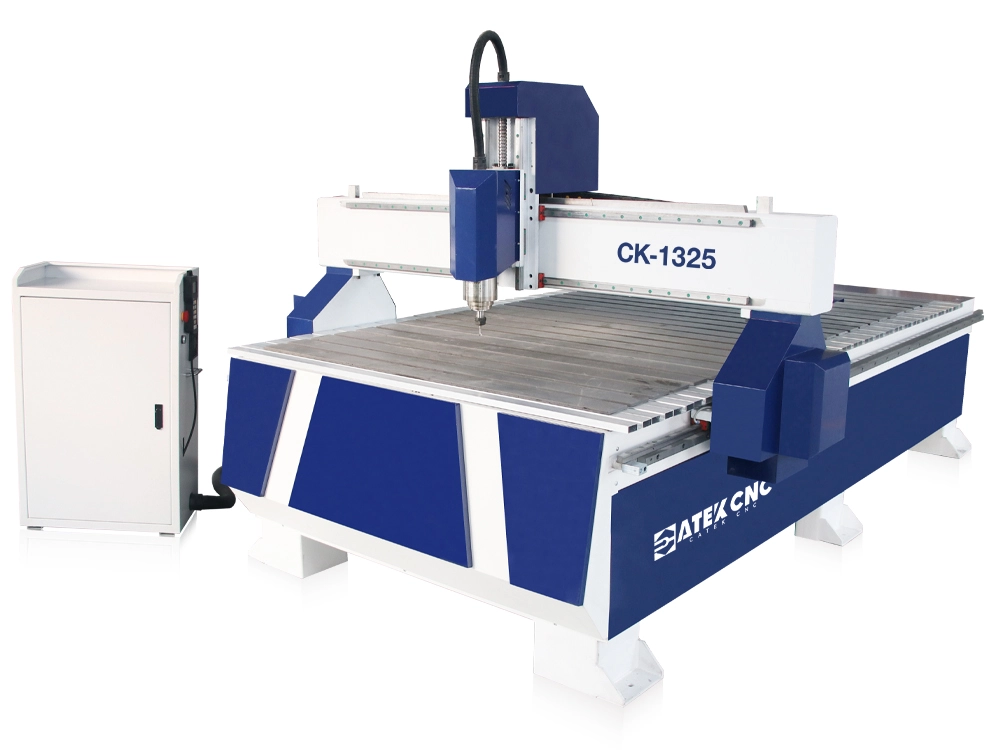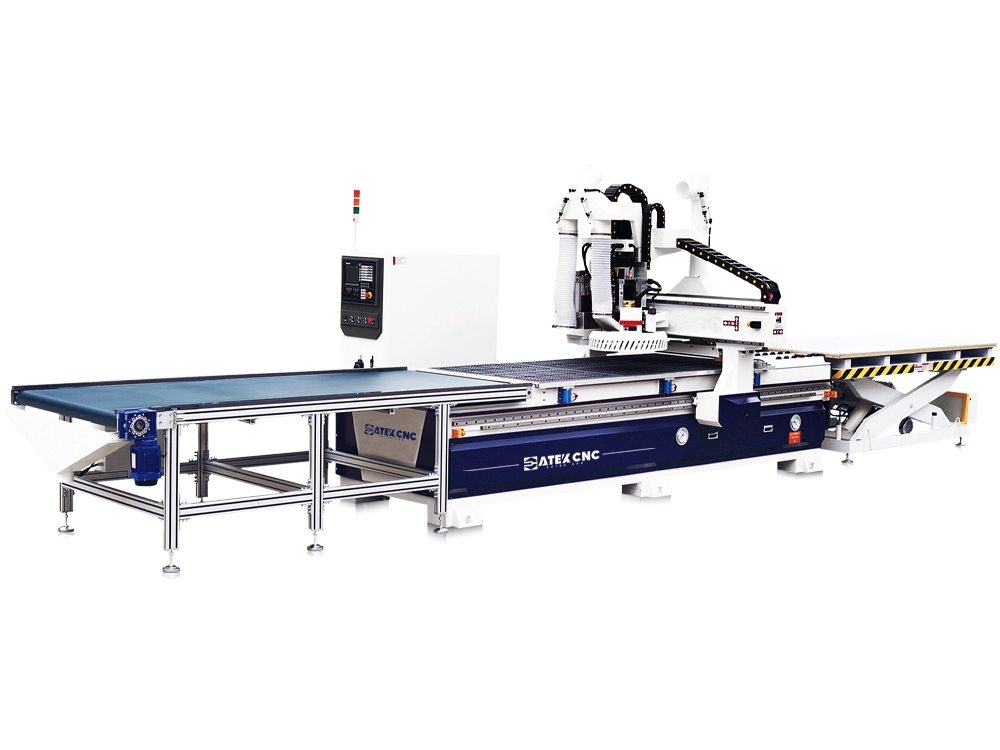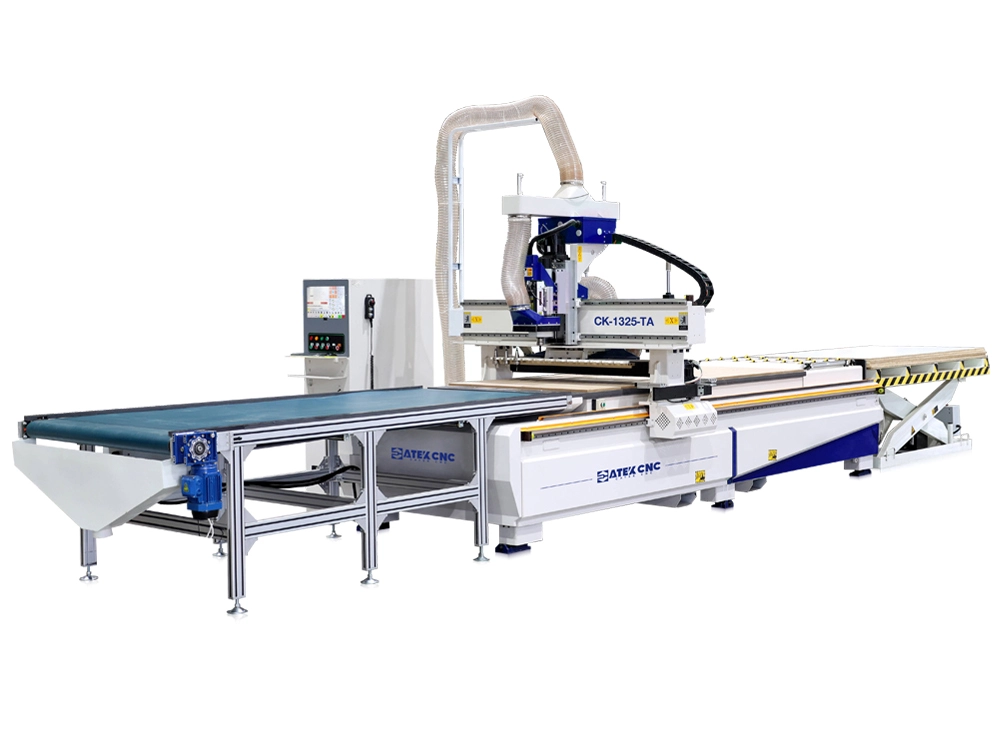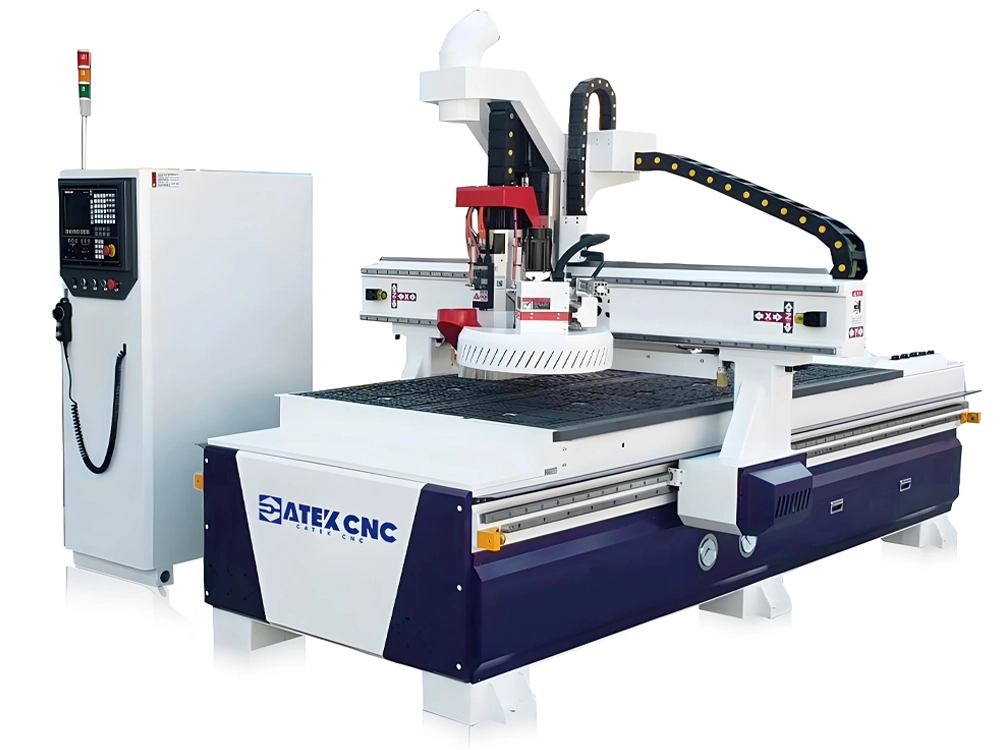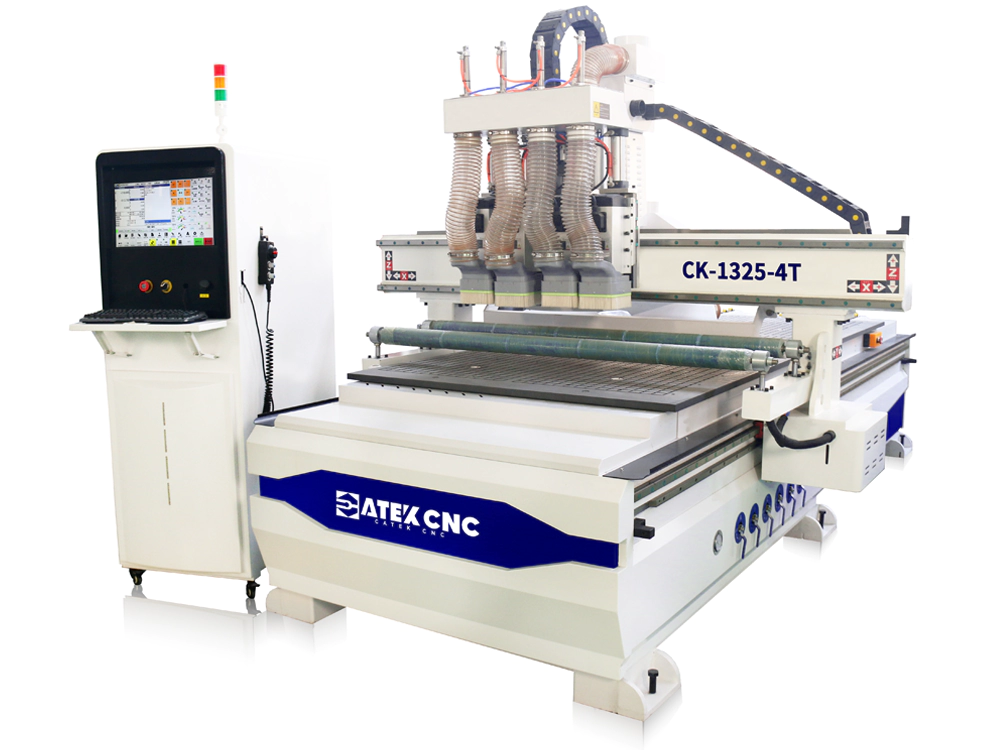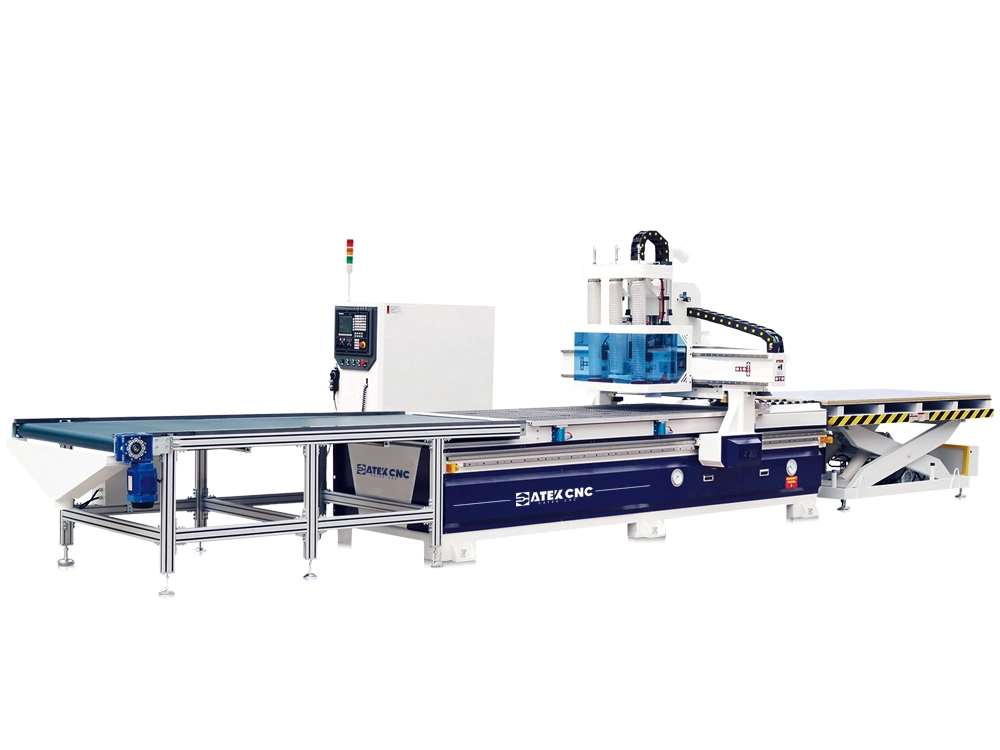Classification of Chinese-style Wooden Doors
Based on the joining method of the door panels, structural complexity, and the presence of decorative elements such as carvings, Chinese-style wooden doors can be categorized as follows:
- Solid Wood Doors
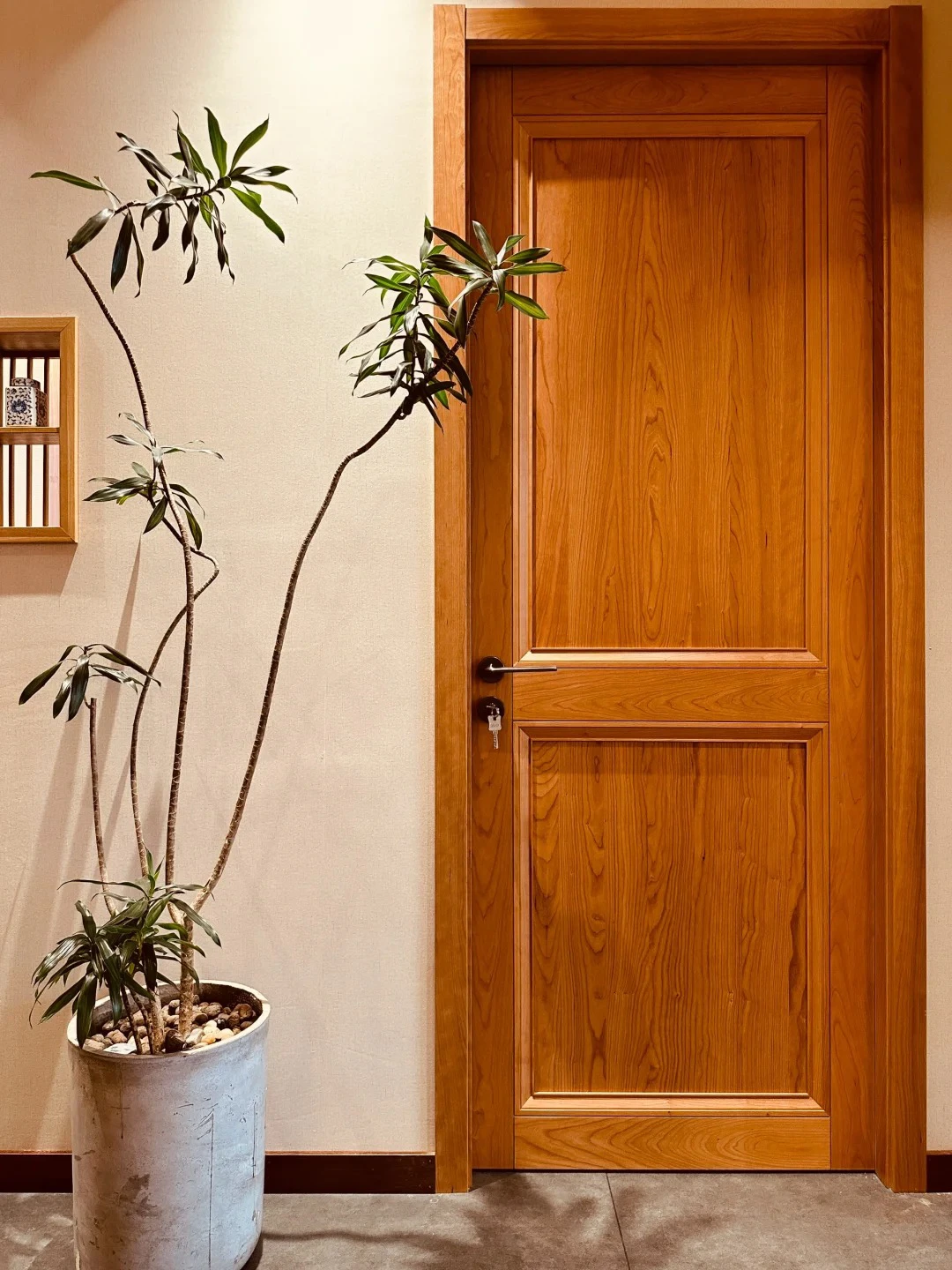
The entire door is made of the same type of wood, with both the frame and the panel being solid wood. There is generally no use of other panel materials (though some solid wood doors may have minor joins, the main body remains solid wood). Common wood types include pine, fir, walnut, and oak.
Since these doors are crafted from whole or large pieces of wood, they are relatively heavy, providing a solid feel when closing and offering better sound insulation than most composite doors. Their structure is relatively simple, relying primarily on the natural grain and texture of the wood to embody the rustic and substantial qualities of Chinese style. They boast high-grade aesthetics, excellent environmental friendliness, and outstanding durability.
However, due to their pure solid wood construction, the requirements for wood drying treatment are extremely high. Otherwise, they are prone to cracking or warping due to changes in environmental humidity. Solid wood doors are significantly heavier than composite doors, placing stricter demands on the quality of the frame, hinges, and other load-bearing components, as well as on installation craftsmanship.
- Engineered Wood Doors
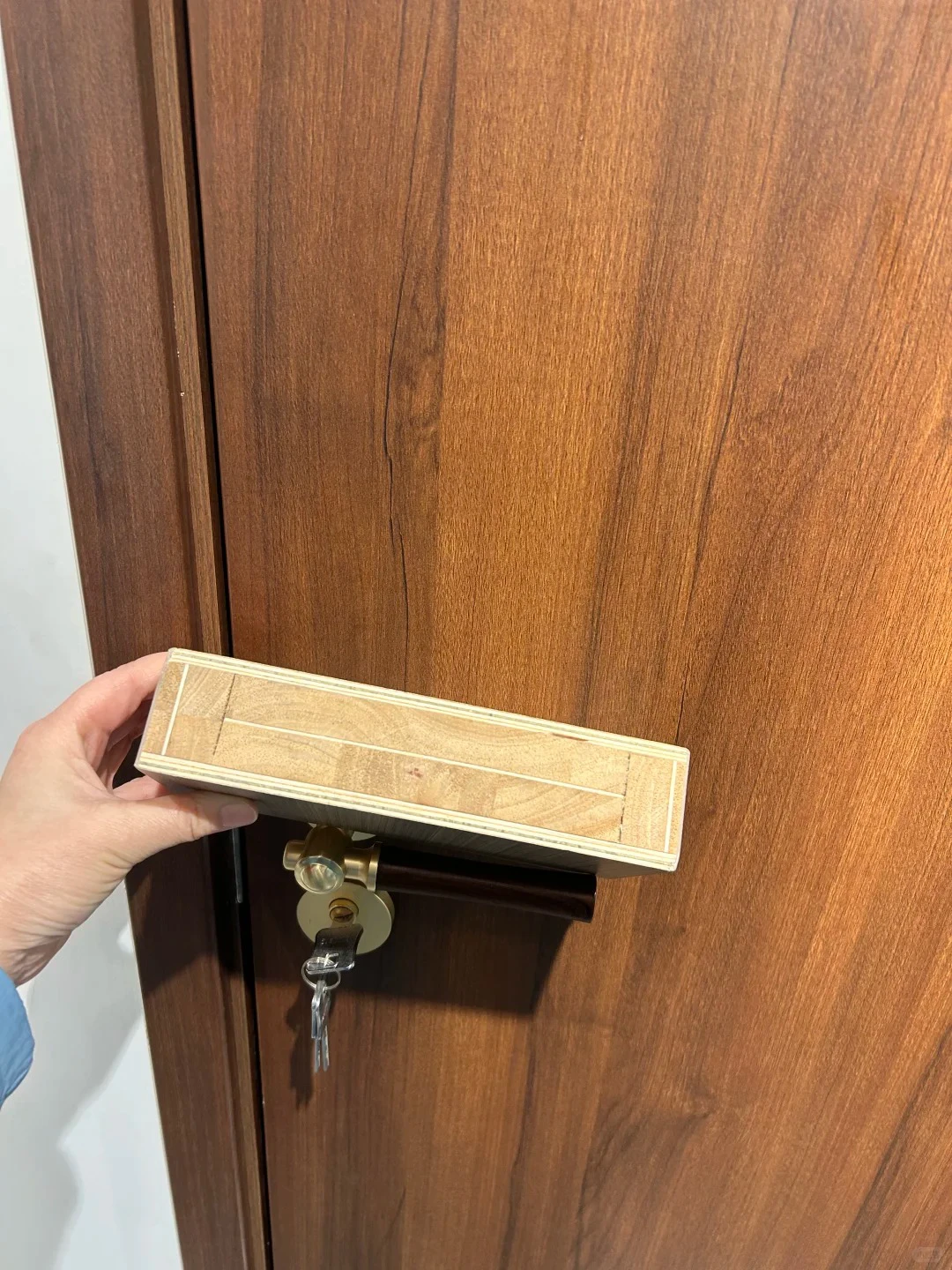
Structurally, these doors consist of three main parts: the core, veneer, and frame.
Core: Typically made of lightweight, breathable woods such as pine or fir, joined together to ensure door stability while reducing overall weight.
Veneer: Usually made of solid wood veneer (e.g., walnut, cherry) or engineered wood, adhered to the core surface to mimic the grain and texture of solid wood doors.
Frame: Generally made of solid wood to provide fixation and support.
These doors combine the texture of solid wood with the stability of composite panels, making them less prone to warping or cracking. They are also more affordable than solid wood doors, making them a common choice for Chinese-style interior design.
- Flat Panel Doors
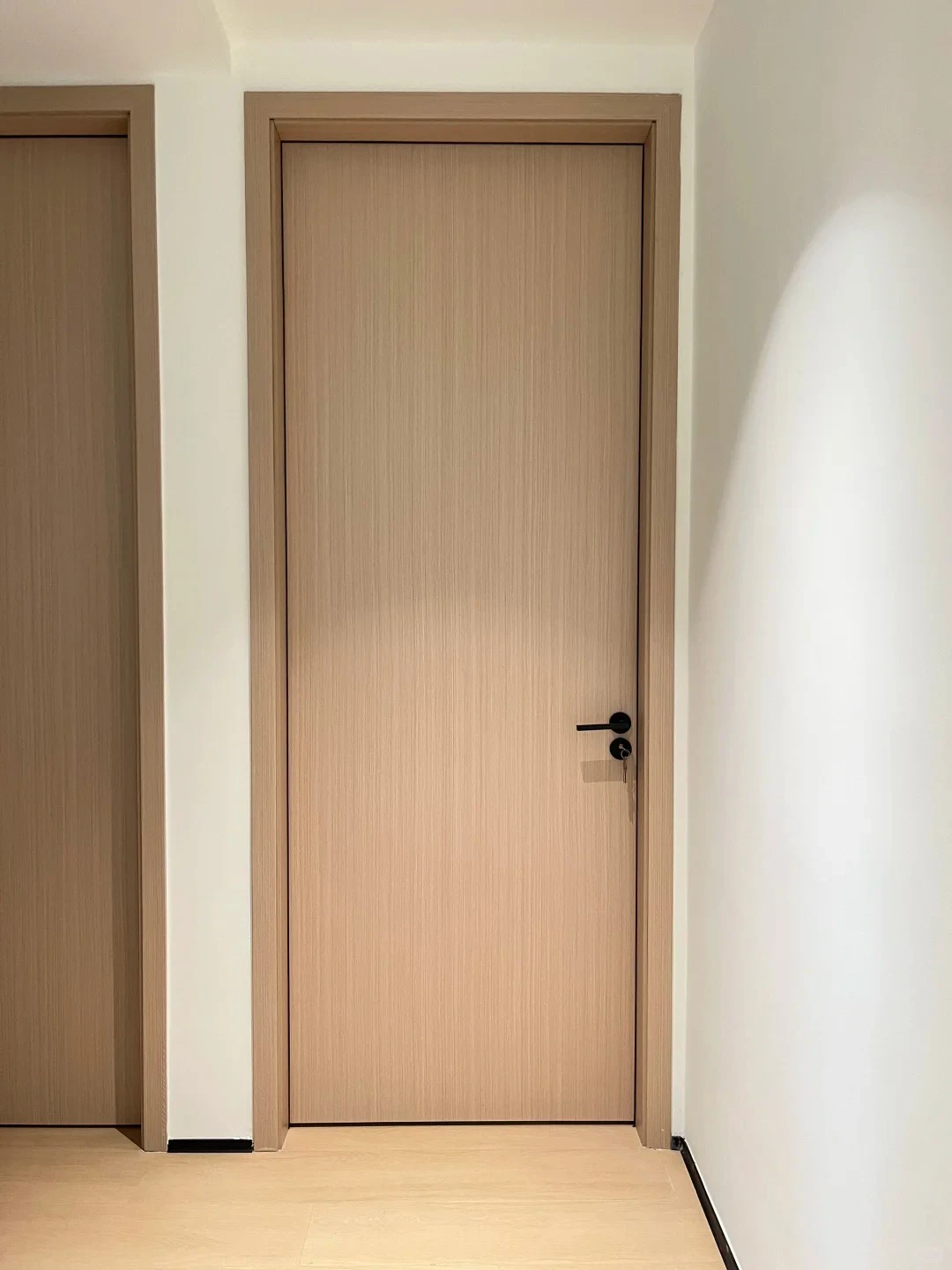
The door surface is smooth and flat, without complex shapes or carvings, and is often made of solid wood or engineered wood.
Despite their simple structure, the natural grain and color of the wood, along with minimalist line designs, can reflect the simplicity and elegance of Chinese style. These doors are suitable for modern Chinese or minimalist Chinese interior styles.
- Decorative Doors
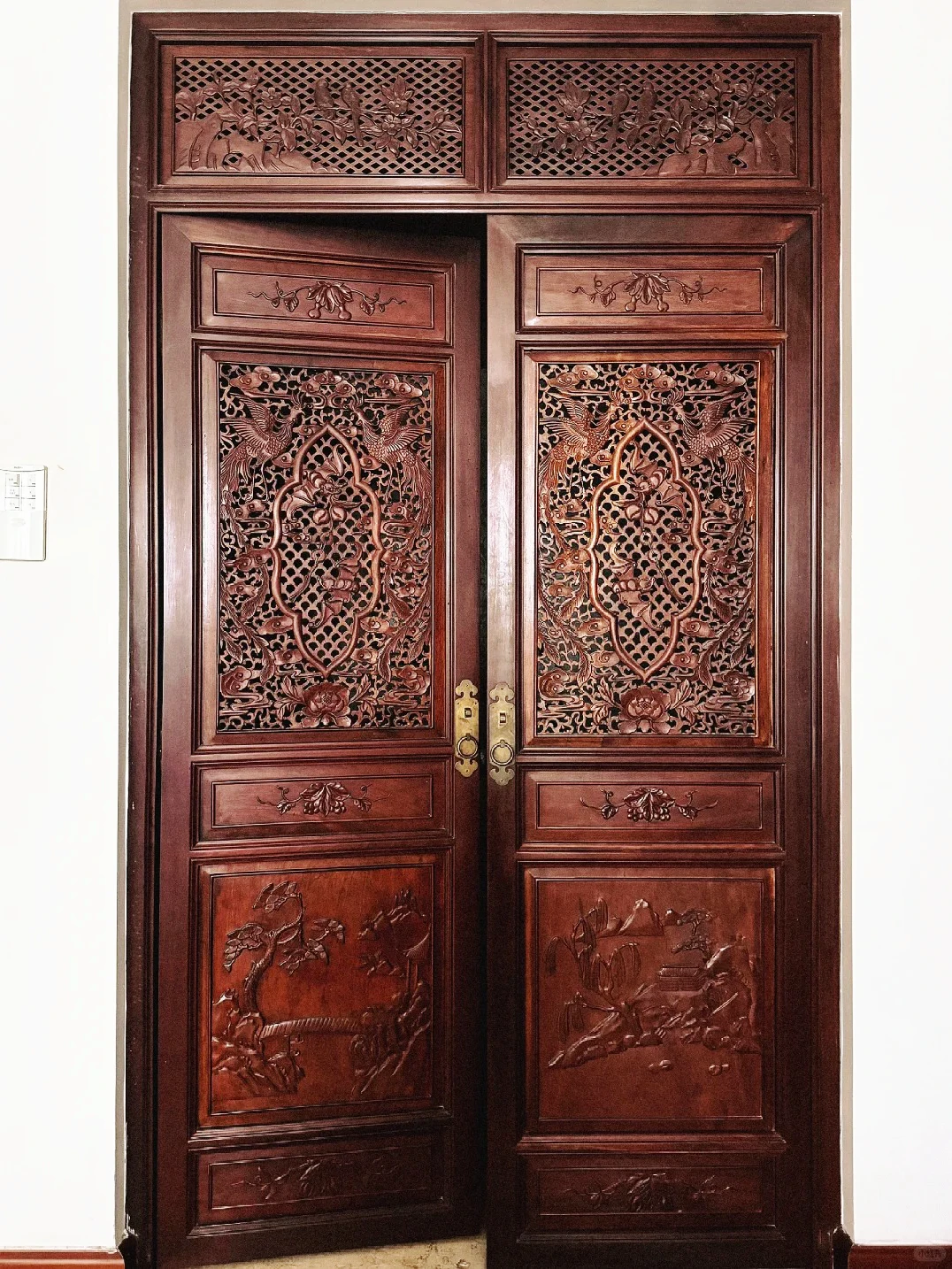
These doors feature various traditional Chinese designs on the panels, such as grilles, carvings, or lines.
Grilles: Common patterns include grid, fretwork, or crackled ice designs, formed by joining wood pieces into regular or irregular patterns to enhance the door’s layering and three-dimensional effect.
Carvings: Include relief and openwork techniques, often depicting traditional Chinese motifs such as flowers, birds, landscapes, or auspicious symbols (e.g., dragons, phoenixes, or Ruyi designs), imbuing the door with rich cultural and artistic significance.
The craftsmanship for decorative doors is relatively complex, requiring high technical skill from carpenters to ensure both structural stability and the aesthetic precision of the designs.
Application of CNC Routers in the Production of Chinese-Style Wooden Doors
Modern CNC routers can perform various machining functions, including cutting, milling, engraving, and drilling. Their applications vary depending on the type of wooden door being processed.
- Solid Wood Doors
Cutting stock: The panels and frames of solid wood doors are typically made from large natural timber pieces. CNC routers can perform precision dimension cutting and grooving (e.g., mortise and tenon slots for door frames) based on preset programs, avoiding manual cutting errors and ensuring tight structural alignment.
Texture finishing and carving: CNC routers can execute delicate shallow relief carvings on door frames or panels, such as recessed corner moldings, relief borders, or small floral, bird, and auspicious motifs on the panel center.
- Engineered Wood Doors
In the production of engineered wood doors, CNC routers are primarily used for veneer engraving. Through "thin-skin carving" techniques, they can carve intricate Chinese patterns (e.g., intertwining branches, cloud motifs) onto the surface.
- Decorative Doors
Decorative doors are the most reliant on CNC routers among Chinese-style door panels, as their complex lattice joinery and relief/openwork carvings almost always require CNC technology.
Lattice structure processing: Traditional Chinese lattice patterns (e.g., grid, swastika, diagonal grid) require multiple wooden strips to be joined at fixed angles and dimensions. CNC routers can batch-process all lattice components (including varying-length strips and mortise-and-tenon joints) in a single operation.
Relief and openwork carving:
- Relief: Raised patterns (e.g., landscapes, flowers, birds) are carved onto the door surface. CNC routers use layered engraving to control depth variations (ranging from 0.5mm to 50mm), creating three-dimensional layers with smooth edges—far more precise than manual carving.
- Openwork: Hollowed-out patterns (e.g., traditional window lattice designs) are achieved through "penetration cutting + contour finishing" in steps, ensuring burr-free edges and preserving the door panel’s structural integrity (avoiding wood cracks caused by manual chiseling).
Standardized replication of traditional motifs: Common auspicious patterns (e.g., dragons, phoenixes, Ruyi, bats) on Chinese-style doors are often traditional designs. CNC routers can accurately reproduce these from CAD drawings and enable mass production (allowing the same pattern to be replicated across multiple doors for stylistic consistency), solving the issue of manual carving’s inconsistency and lack of standardization.
Production Process of Chinese-Style Wooden Doors
- Raw material preparation
Choose the right material according to the purpose, style and budget of the door panel. Commonly used materials include solid wood, density board, particle board and plywood. The surface of density board is flat and suitable for various complex processing, such as carving and lamination; particle board has low cost and stable structure; plywood has good bending resistance. For high-end door panels, such as solid wood doors or high-end custom doors, solid wood materials will be selected. These woods have natural texture and texture, which can improve the quality of door panels.
Commonly used woods for Chinese door panels include mahogany, sandalwood, elm, etc. Mahogany has a hard texture, beautiful texture and deep color, which is suitable for making door panels for high-end Chinese furniture. Sandalwood has a unique aroma, high wood density and good durability. Elm is relatively affordable, with clear texture and can also well reflect the Chinese style.
the specifications of the material and ensure that the size of the material can meet the requirements of door panel processing. For example, the standard board size is generally 1220mm×2440mm. This type of board is used for processing and needs to be reasonably cut according to the size of the door panel.
- Material pretreatment
For solid wood materials, the moisture content of the wood needs to be controlled. Generally speaking, the moisture content of the wood should be between 12% and 18%. Too high or too low will cause the wood to deform or crack. A combination of natural drying and artificial drying can be used. Natural drying is to place the wood in a well-ventilated place to allow the moisture to evaporate naturally; artificial drying can use drying equipment to accelerate the drying process.
Check the surface flatness and quality of the material. If there are defects, such as pits, bumps or cracks, they need to be repaired or polished. For board materials, dust and impurities on the surface also need to be removed to prepare for subsequent processing.
Develop a cutting plan based on the design size of the door panel and the specifications of the board. Consider how to maximize the use of the board and reduce waste. For example, if the door panel size is 600mm×800mm and the board size is 1220mm×2440mm, the cutting positions of multiple door panels can be reasonably arranged on one board.
Determine the cutting order, generally cutting the long side first, then cutting the short side. This can reduce the movement and deformation of the material during the cutting process.
Use a precision sliding table saw, CNC cutting machine, or CNC router machine for cutting. When operating the sliding table saw, make sure that the material is close to the backing and the speed is uniform when pushing the material to ensure the flatness of the cut surface. The CNC cutting machine or CNC router machine controls the cutting path through pre-programming, which is more accurate and suitable for mass production.
After the cutting is completed, check the quality of the cut surface. The cut surface should be flat and vertical, without obvious burrs and tears. If there are defects, it needs to be polished or cut again.
- Modeling processing
If patterns need to be engraved on the door panel, such as fretwork, floral and bird motifs, etc., then a CNC router machine must be used for processing.
First, import the designed pattern file (for example, in CAD format) into the CNC router machine software, then select appropriate engraving tools based on the complexity of the pattern and the hardness of the material. For intricate patterns, use tools with smaller diameters, such as 0.8-1.5mm flat-end mills; for large-area engraving, use tools with larger diameters, such as 6-10mm end mills.
Set the CNC router parameters, including spindle speed, feed rate, and engraving depth. For example, when engraving MDF, the spindle speed can be set to 18,000-24,000 rpm, the feed rate can be adjusted between 500-2,000 mm/min depending on the tool diameter and engraving complexity, and the engraving depth is determined according to the design requirements. Generally, the decorative engraving depth is 3-5mm.
For door panels with special shapes, such as curved edges or concave-convex features, an CNC router with milling functionality must be used for processing. When machining curved edges, the toolpath and processing parameters should be set according to the arc radius and length. During the milling process, pay attention to tool wear and machining accuracy. Severe tool wear will affect shape quality, leading to issues such as uneven surfaces or dimensional deviations.
If you need to process the side of the panel, such as drilling holes on the side of a wooden door, machining hinge holes, or lock holes, you need to use a CNC router machine with side milling or horizontal milling capabilities, or consider selecting a four-axis CNC engraving machine. This type of CNC router machine can tilt the machining tool at a certain angle or is equipped with a horizontal machining tool.
- Surface treatment
Sanding treatment:
Sand the door panels after cutting and shaping to make the surface smoother. First, use coarse sandpaper (such as 100-120 mesh) to perform preliminary sanding on the cutting surface and the modeling surface to remove burrs and uneven parts on the surface. Then use fine sandpaper (such as 180-240 mesh) for fine sanding to improve the surface finish. For the carved pattern part, a combination of manual sanding and mechanical sanding should be used. Manual sanding can better control the sanding force and avoid damaging the pattern details; mechanical sanding can improve efficiency and make the surface of a large area smoother.
Finishing treatment:
Choose a suitable finishing method according to the design style and purpose of the door panel. If it is a kitchen cabinet door, you can choose baking varnish or melamine veneer for waterproofing and easy cleaning. The surface of the baking varnish door panel is bright, hard, and has good wear resistance and corrosion resistance; melamine veneer is rich in color and low in cost. For solid wood door panels, you can also choose solid wood paint, wood wax oil and other finishing methods.
During the finishing process, strictly follow the instructions of the finishing product. For example, the paint needs to be applied in a special paint room. After multiple spraying and baking of primer and topcoat, each layer of paint must be fully dried; when using wood wax oil, ensure that it is evenly applied and that the wood wax oil fully penetrates into the wood to achieve the best protection and decorative effect.
- Assembly and installation
Hardware installation:
Install hardware such as hinges and handles according to the functional requirements of the door panel. Select the appropriate hardware model and specification. The bearing capacity of the hinge must be able to meet the weight requirements of the door panel, and the style of the handle must match the overall design of the door panel.
When installing the hinge, ensure that the hinge is positioned accurately and the screws are tightened moderately. Generally, the installation position of the hinge is marked on the door panel and the cabinet body first, and then a screwdriver or power tool is used for installation. When installing the handle, pay attention to the installation height and direction of the handle for the convenience of users.
Door panel installation:
Install the processed door panel onto the door frame or cabinet body. During installation, ensure precise positioning of the door panel and maintain uniform gaps between the panel and frame. For installations involving multiple door panels, pay special attention to alignment and flatness between adjacent panels. Tools such as shims or adjustment screws may be used to fine-tune the position and gaps of the door panels.




